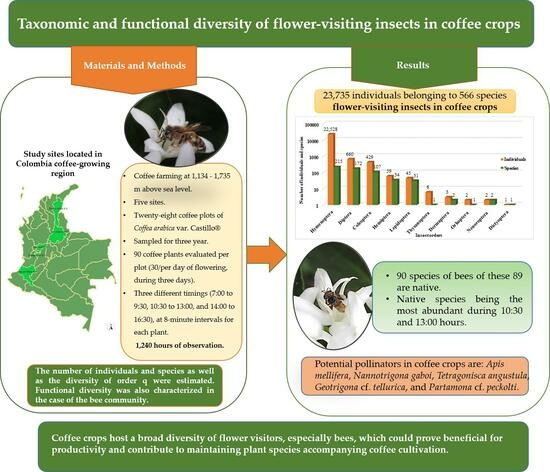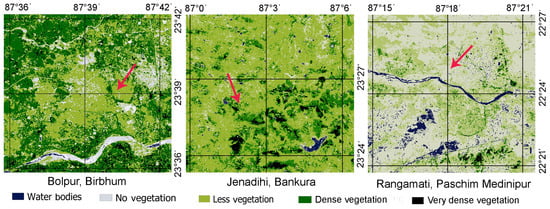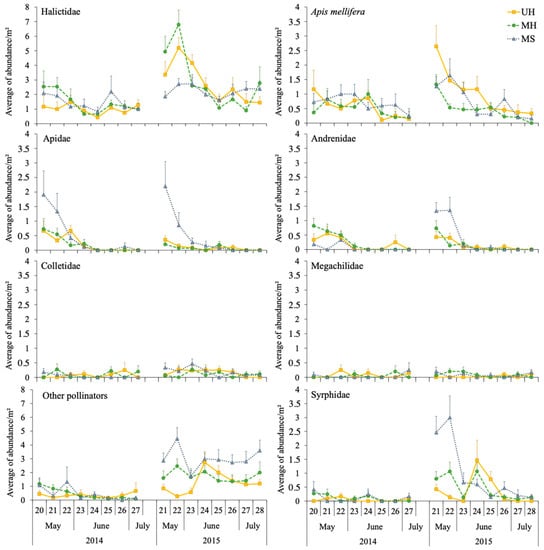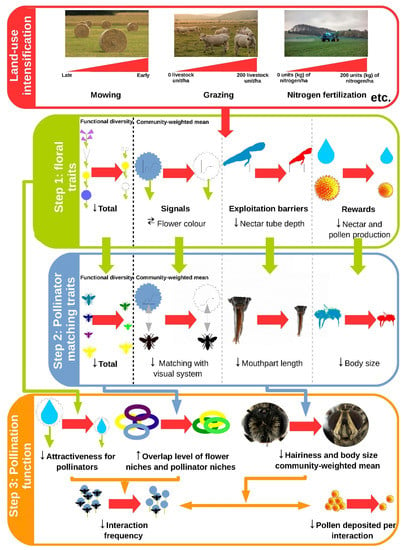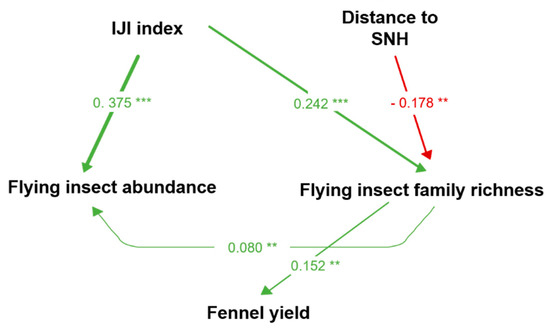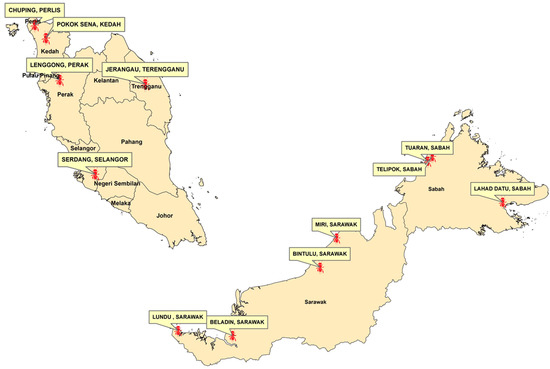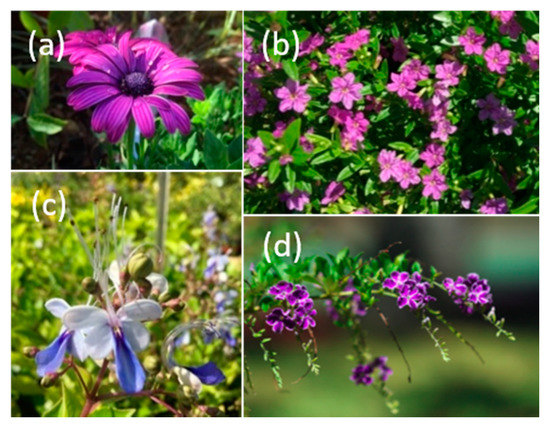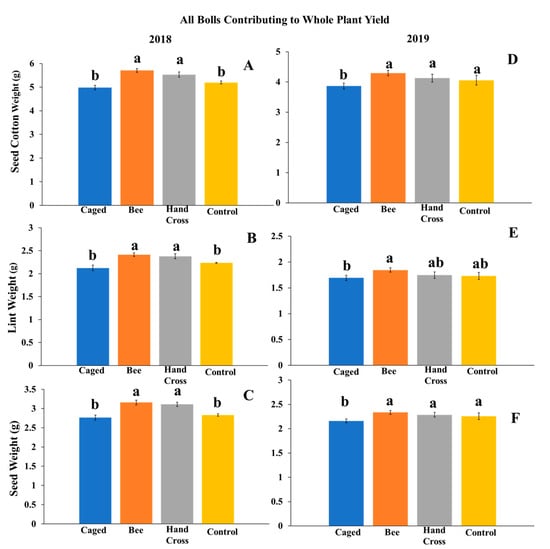Insects on Pollination Ecology
Share This Topical Collection
Editor
 Prof. Isabelle Dajoz
Prof. Isabelle Dajoz
 Prof. Isabelle Dajoz
Prof. Isabelle Dajoz
E-Mail
Website
Collection Editor
Institut d'Ecologie et des Sciences de l'Environnement de Paris (IEES Paris), Université de Paris, 75005 Paris, France
Interests: urban pollination ecology; urban pollinators; pollination phenology; pollination networks
Topical Collection Information
Dear Colleagues,
Pollination ecology is a rapidly growing field of research. Indeed, plant-pollinator interactions are not only the basis for the essential pollination function, but they also provide one of the most emblematic ecosystem services for humans. However, several aspects of global changes together with new management practices are increasingly acknowledged as threats for pollinators. This Topical Collection will be devoted to the understanding of emerging aspects of these threats, including
- Climate-change-induced variations in the phenology of plant and pollinator interactions
- Landscape-artificialization-induced variations in the availability of nesting and floral resources, in particular in urban and agricultural areas
- Agricultural (ex: pesticide use, soil management, agri-environmental schemes) and other management practices (ex: honeybee hive management, plant communities management)
We aim to focus this Topical Collection on the impacts of these emerging threats to the composition and diversity of pollinator communities to plant-pollinator networks and to the provisioning of pollination services. This Topical Collection welcomes empirical, experimental, and theoretical approches on these topics. We would like to gather approaches on all types of pollinators in an as wide as possible range of environmental conditions and ecosystems.
Prof. Isabelle Dajoz
Collection Editor
Manuscript Submission Information
Manuscripts should be submitted online at www.mdpi.com by registering and logging in to this website. Once you are registered, click here to go to the submission form. Manuscripts can be submitted until the deadline. All submissions that pass pre-check are peer-reviewed. Accepted papers will be published continuously in the journal (as soon as accepted) and will be listed together on the collection website. Research articles, review articles as well as short communications are invited. For planned papers, a title and short abstract (about 100 words) can be sent to the Editorial Office for announcement on this website.
Submitted manuscripts should not have been published previously, nor be under consideration for publication elsewhere (except conference proceedings papers). All manuscripts are thoroughly refereed through a single-blind peer-review process. A guide for authors and other relevant information for submission of manuscripts is available on the Instructions for Authors page. Insects is an international peer-reviewed open access monthly journal published by MDPI.
Please visit the Instructions for Authors page before submitting a manuscript.
The Article Processing Charge (APC) for publication in this open access journal is 2600 CHF (Swiss Francs).
Submitted papers should be well formatted and use good English. Authors may use MDPI's
English editing service prior to publication or during author revisions.
Keywords
- Pollinator communities
- Plant-pollinator interactions
- Plant-pollinator networks
- Floral resources
- Urbanization
- Agricultural practices
- Pollination function
- Pollination ecosystemic services
Published Papers (11 papers)
Open AccessArticle
Exploring Biodiversity through the Lens of Knautia arvensis Pollinators: Knautia Pollinator Walks as a Monitoring Method
by
Markus Franzén and Magnus Stenmark
Viewed by 749
Abstract
Declining populations of native pollinators, especially wild bees, underline the urgent need for effective monitoring within agricultural ecosystems. This study aims to (i) establish the ‘
Knautia Pollinator Walk’ as an innovative pollinator monitoring method, (ii) examine the link between pollinator richness/density and
[...] Read more.
Declining populations of native pollinators, especially wild bees, underline the urgent need for effective monitoring within agricultural ecosystems. This study aims to (i) establish the ‘
Knautia Pollinator Walk’ as an innovative pollinator monitoring method, (ii) examine the link between pollinator richness/density and land cover, and (iii) assess if specialist solitary bees indicate pollinator abundance and morphogroup richness. The approach involves surveying 500
Knautia arvensis inflorescences per site thrice per season. Observations of 11,567 pollinators across 203 taxa showed significant correlations between pollinator diversity and land use. Pollinator populations fluctuated with land cover type, increasing in open areas but decreasing or stabilising in forested and shrubby regions. Noteworthy differences in pollinator types were seen between Russia (solitary bees, small Diptera, Lepidoptera) and Sweden (bumblebees, beetles, furry Diptera). The “
Knautia Pollinator Walk” shows promising signs of being an effective tool for monitoring spatiotemporal biodiversity trends. The method offers a scalable approach to pollinator monitoring, which is essential for developing conservation strategies and supporting pollinator populations.
Full article
►▼
Show Figures
Open AccessArticle
Floral Trait Preferences of Three Common wild Bee Species
by
Kim C. Heuel, Tim A. Haßlberger, Manfred Ayasse and Hannah Burger
Viewed by 1417
Abstract
The interaction between bees and flowering plants is mediated by floral cues that enable bees to find foraging plants. We tested floral cue preferences among three common wild bee species:
Lasioglossum villosulum,
Osmia bicornis, and
Bombus terrestris. Preferences are well
[...] Read more.
The interaction between bees and flowering plants is mediated by floral cues that enable bees to find foraging plants. We tested floral cue preferences among three common wild bee species:
Lasioglossum villosulum,
Osmia bicornis, and
Bombus terrestris. Preferences are well studied in eusocial bees but almost unknown in solitary or non-eusocial generalist bee species. Using standardized artificial flowers altered in single cues, we tested preferences for color hue, achromatic contrast, scent complexity, corolla size, and flower depth. We found common attractive cues among all tested bees. Intensively colored flowers and large floral displays were highly attractive. No preferences were observed in scent complexity experiments, and the number of volatiles did not influence the behavior of bees. Differing preferences were found for color hue. The specific behaviors were probably influenced by foraging experience and depended on the flower choice preferences of the tested bee species. In experiments testing different flower depths of reward presentation, the bees chose flat flowers that afforded low energy costs. The results reveal that generalist wild bee species other than well-studied honeybees and bumblebees show strong preferences for distinct floral cues to find potential host plants. The diverse preferences of wild bees ensure the pollination of various flowering plants.
Full article
►▼
Show Figures
Open AccessArticle
Taxonomic and Functional Diversity of Flower-Visiting Insects in Coffee Crops
by
Juan Diego Maldonado-Cepeda, Jesús Hernando Gómez, Pablo Benavides, Juliana Jaramillo and Zulma Nancy Gil
Cited by 1 | Viewed by 2396
Abstract
Despite the important role that flower-visiting insects play in agricultural production, none of the previous studies of coffee pollinators in Colombia have incorporated functional diversity into their analysis. Therefore, this study aimed to quantify the abundance, richness, and functional diversity of insects that
[...] Read more.
Despite the important role that flower-visiting insects play in agricultural production, none of the previous studies of coffee pollinators in Colombia have incorporated functional diversity into their analysis. Therefore, this study aimed to quantify the abundance, richness, and functional diversity of insects that visit flowers in coffee crops. Twenty-eight plots were selected among five sites in the north, center, and south of Colombia. In each plot, coffee flower insect visitors were collected and recorded on 90 trees at eight-minute intervals per tree, at three different times over three days. All sampling was carried out during two flowering events per year, over three years, resulting in a total of 1240 h of observations. Subsequently, the insects were taxonomically identified, and the number of individuals and species, as well as the diversity of the order q, were estimated. Functional diversity was also characterized in the bee community. The results: (a) 23,735 individuals belonging to 566 species were recorded; of them, 90 were bees, with the native species being the most abundant during 10:30 and 13:00 h; (b) bees formed five functional groups, with corbiculate and long-tongued non-corbiculate bees being the most abundant and occupying the largest regions of functional space; (c) potential pollinators in coffee crops are
Apis mellifera,
Nannotrigona gaboi,
Tetragonisca angustula,
Geotrigona cf.
tellurica, and
Partamona cf.
peckolti. Coffee crops host a wide diversity of flower visitors, especially bees, which could be beneficial for productivity and contribute to the maintenance of plant species that accompany coffee cultivation.
Full article
►▼
Show Figures
Open AccessArticle
Spatial and Temporal Variations in Richness, Diversity and Abundance of Floral Visitors of Curry Plants (Bergera koenigii L.): Insights on Plant-Pollinator Interactions
by
Ujjwal Layek, Anirban Deep Das, Uday Das and Prakash Karmakar
Cited by 1 | Viewed by 2108
Abstract
The reproductive success of flowering plants relates to flower-visitor communities and plant-pollinator interactions. These traits are species- and region-specific and vary across regions, pollinator groups, and plant species. However, little literature exists on the spatiotemporal variation in visitor activity, especially in India. Here,
[...] Read more.
The reproductive success of flowering plants relates to flower-visitor communities and plant-pollinator interactions. These traits are species- and region-specific and vary across regions, pollinator groups, and plant species. However, little literature exists on the spatiotemporal variation in visitor activity, especially in India. Here, we aimed to depict the spatial and temporal variation in visitor activity on the curry plants (
Bergera koenigii). Data were collected at different daytime slots from three vegetation zones (confirmed by field surveys and normalized difference vegetation index values in remote sensing)—dense, medium-density, and low-density vegetation in West Bengal, India. The visitors’ richness, diversity, and abundance were higher in the area with dense vegetation. Considering daytime patterns, higher values for these parameters were obtained during 10.00–14.00 h. For most visitors, the flower handling time was shorter, and the visitation rate was higher in dense vegetation areas (at 10.00–14.00 h) than in medium- and low-density vegetation areas. The proportions of different foraging categories varied over time. Vital pollinators were
Apis cerana,
Apis dorsata,
Appias libythea,
Halictus acrocephalus,
Nomia iridescens, and
Tetragonula iridipennis. However, the effectiveness of pollinators remained region-specific. Therefore, it can be concluded that floral visitors’ richness, diversity, abundance, and plant-visitor interactions varied spatially with their surrounding vegetation types and also changed daytime-wise.
Full article
►▼
Show Figures
Open AccessArticle
Effects of Managed and Unmanaged Floral Margins on Pollination Services and Production in Melon Crops
by
María Pérez-Marcos, Francisco Javier Ortiz-Sánchez, Elena López-Gallego, Helena Ibáñez, Aline Carrasco and Juan Antonio Sanchez
Cited by 3 | Viewed by 2122
Abstract
Melon is among the most consumed fruits in the world, being a crop that depends almost entirely on insects for its reproduction, which is why it is especially sensitive to declining pollination services. Restoration and maintenance of hedgerows and agricultural borders around crops
[...] Read more.
Melon is among the most consumed fruits in the world, being a crop that depends almost entirely on insects for its reproduction, which is why it is especially sensitive to declining pollination services. Restoration and maintenance of hedgerows and agricultural borders around crops are generally carried out by sowing flowering herbaceous plants or establishing shrubby species; however, a cost-effective and lower-maintenance alternative for farmers could be as simple as allowing vegetation to regenerate naturally without any management actions. This work aimed to test the effects of three different types of margins (managed herbaceous, managed shrubby, and unmanaged herbaceous) on the overall abundance and richness of wild pollinators in melon crops. The work was performed in three localities in southern Spain over two years. Pollinators were monitored visually using 1 × 1 m sampling squares and pan traps within melon fields. Moreover, crop yield was estimated by measuring fruit weight and the number of seeds. In general, higher abundances of pollinators were observed in melon fields during the second year. In addition, the abundances of Syrphidae, Andrenidae, Apidae (excl.
Apis mellifera), and pollinators other than bees, belonging to the orders Diptera, Coleoptera, Hymenoptera, and Lepidoptera, showed higher values in melon fields with shrubby margins than in fields with herbaceous margins (managed or unmanaged). However, no effect of floral margins on the yield of melon crops was found.
Full article
►▼
Show Figures
Open AccessArticle
Pollination Effectiveness of the Hoverfly Eristalinus aeneus (Scopoli, 1763) in Diploid and Triploid Associated Watermelon Crop
by
Manuela Sánchez, Yelitza Velásquez, Mónica González and Julián Cuevas
Cited by 5 | Viewed by 1890
Abstract
Watermelon (
Citrullus lanatus) is an important crop worldwide. Pollination of this crop is carried out by insects, with honey bees (
Apis spp.) and bumble bees (
Bombus spp.) as the most used in greenhouse production. Nevertheless, due to the extreme
[...] Read more.
Watermelon (
Citrullus lanatus) is an important crop worldwide. Pollination of this crop is carried out by insects, with honey bees (
Apis spp.) and bumble bees (
Bombus spp.) as the most used in greenhouse production. Nevertheless, due to the extreme conditions in closed enclosures, these hymenopterans suffer management and behavior problems leading to insufficient pollination. The effectiveness of three release densities (15, 30, and 45 individuals/m
2) of
Eristalinus aeneus was compared in diploid- and triploid-associated watermelon varieties under protected cultivation. Floral visits, pollen–pistil interaction after pollen transport, yield, and fruit quality were evaluated. The number of floral visits increased with release density in both pistillate and staminate flowers. No significant differences were observed, however, among release densities or between flower types in the duration of the visits. Floral preferences were not found in the behavior of
E. aeneus in watermelon. High and medium release densities increased pollen deposition onto the stigma, and consequently the yield of the triploid variety compared to low release density, by 23.8 to 41.8% in 2020 and by 36.3 to 46.7% in 2021. The results of this trial demonstrate the potential of
E. aeneus as a managed pollinator in protected cultivation of triploid watermelon.
Full article
►▼
Show Figures
Open AccessReview
Using Matching Traits to Study the Impacts of Land-Use Intensification on Plant–Pollinator Interactions in European Grasslands: A Review
by
Jérémie Goulnik, Sylvain Plantureux, Isabelle Dajoz and Alice Michelot-Antalik
Cited by 13 | Viewed by 3803
Abstract
Permanent grasslands are suitable habitats for many plant and animal species, among which are pollinating insects that provide a wide range of ecosystem services. A global crisis in pollination ecosystem service has been highlighted in recent decades, partly the result of land-use intensification.
[...] Read more.
Permanent grasslands are suitable habitats for many plant and animal species, among which are pollinating insects that provide a wide range of ecosystem services. A global crisis in pollination ecosystem service has been highlighted in recent decades, partly the result of land-use intensification. At the grassland scale, however, the underlying mechanisms of land-use intensification that affect plant–pollinator interactions and pollination remain understudied. In this review, we first synthesise the literature to provide new insights into the relationships between land-use intensification and pollination by using matching community and interaction traits. We then identify knowledge gaps and summarise how land-use intensification of grassland influences floral traits that may in turn be associated with modifications to pollinator matching traits. Last, we summarise how these modifications may affect pollination function on permanent grasslands. Overall, land-use intensification may lead to a shift in flower colour, a decrease in mean nectar tube depth and a decrease in reward production and pollen quality at the community level. This, in turn, may generate a decrease in pollinator mouthparts length and body size, that may favour pollinators that require a low amount of floral reward. We found no study citing the effect of land-use intensification on volatile organic compounds emitted by flowers despite the importance of these molecules in pollinator community composition. Overall, our review highlighted major knowledge gaps about the effects of land-use intensification on plant–pollinator interactions, and suggests that land-use intensification could favour plants with generalised floral traits that adversely affect pollination.
Full article
►▼
Show Figures
Open AccessArticle
Landscape and Local Drivers Affecting Flying Insects along Fennel Crops (Foeniculum vulgare, Apiaceae) and Implications for Its Yield
by
Lucie Schurr, Benoît Geslin, Laurence Affre, Sophie Gachet, Marion Delobeau, Magdalena Brugger, Sarah Bourdon and Véronique Masotti
Cited by 7 | Viewed by 3746
Abstract
Agricultural landscapes are increasingly characterized by intensification and habitat losses. Landscape composition and configuration are known to mediate insect abundance and richness. In the context of global insect decline, and despite 75% of crops being dependent on insects, there is still a gap
[...] Read more.
Agricultural landscapes are increasingly characterized by intensification and habitat losses. Landscape composition and configuration are known to mediate insect abundance and richness. In the context of global insect decline, and despite 75% of crops being dependent on insects, there is still a gap of knowledge about the link between pollinators and aromatic crops. Fennel (
Foeniculum vulgare) is an aromatic plant cultivated in the South of France for its essential oil, which is of great economic interest. Using pan-traps, we investigated the influence of the surrounding habitats at landscape scale (semi-natural habitat proportion and vicinity, landscape configuration) and local scale agricultural practices (insecticides and patch size) on fennel-flower-visitor abundance and richness, and their subsequent impact on fennel essential oil yield. We found that fennel may to be a generalist plant species. We did not find any effect of intense local management practices on insect abundance and richness. Landscape configuration and proximity to semi-natural habitat were the main drivers of flying insect family richness. This richness positively influenced fennel essential oil yield. Maintaining a complex configuration of patches at the landscape scale is important to sustain insect diversity and crop yield.
Full article
►▼
Show Figures
Open AccessArticle
Metabarcoding in Diet Assessment of Heterotrigona itama Based on trnL Marker towards Domestication Program
by
Jaapar Fahimee, Aqilah Sakinah Badrulisham, Mohd Sani Zulidzham, Nurul Farisa Reward, Nizar Muzammil, Rosliza Jajuli, Badrul Munir Md-Zain and Salmah Yaakop
Cited by 15 | Viewed by 3010
Abstract
Honey quality is the main criterion used for evaluating honey production in the stingless bee
Heterotrigona itama, and it is correlated with the plant species consumed as its main diet. The objective of this study was to obtain the metabarcode data from
[...] Read more.
Honey quality is the main criterion used for evaluating honey production in the stingless bee
Heterotrigona itama, and it is correlated with the plant species consumed as its main diet. The objective of this study was to obtain the metabarcode data from 12 populations of
H. itama species throughout Malaysia (Borneo and Peninsular Malaysia) using the trnL marker. A total of 262 species under 70 families and five phyla of plants were foraged by
H. itama in the studied populations. Spermatophyta and Magnoliophyta were recorded as the two most abundant phyla foraged, at 55.95% and 32.39%, respectively. Four species,
Garcinia oblongifolia, Muntingia calabura, Mallotus pellatus, and
Pinus squamata, occurred abundantly and were consumed by
H. itama in all the populations. These data are considered as a fundamental finding that is specific to the diet of
H. itama for strategizing the management of the domestication process specifically in a mono-cropping system and in a netted structure. Thus, based on these findings, we recommend
Momordica charantia, Melastoma sp., and
Cucumis sativa as the best choices of food plant species to be planted and utilized by
H. itama in meliponiculture.
Full article
►▼
Show Figures
Open AccessArticle
Effects of Urbanization on Plant–Pollinator Interactions in the Tropics: An Experimental Approach Using Exotic Plants
by
Marie Zakardjian, Benoît Geslin, Valentin Mitran, Evelyne Franquet and Hervé Jourdan
Cited by 5 | Viewed by 4077
Abstract
Land-use changes through urbanization and biological invasions both threaten plant-pollinator networks. Urban areas host modified bee communities and are characterized by high proportions of exotic plants. Exotic species, either animals or plants, may compete with native species and disrupt plant–pollinator interactions. These threats
[...] Read more.
Land-use changes through urbanization and biological invasions both threaten plant-pollinator networks. Urban areas host modified bee communities and are characterized by high proportions of exotic plants. Exotic species, either animals or plants, may compete with native species and disrupt plant–pollinator interactions. These threats are heightened in insular systems of the Southwest Pacific, where the bee fauna is generally poor and ecological networks are simplified. However, the impacts of these factors have seldom been studied in tropical contexts. To explore those questions, we installed experimental exotic plant communities in urban and natural contexts in New Caledonia, a plant diversity hotspot. For four weeks, we observed plant–pollinator interactions between local pollinators and our experimental exotic plant communities. We found a significantly higher foraging activity of exotic wild bees within the city, together with a strong plant–pollinator association between two exotic species. However, contrary to our expectations, the landscape context (urban vs. natural) had no effect on the activity of native bees. These results raise issues concerning how species introduced in plant–pollinator networks will impact the reproductive success of both native and exotic plants. Furthermore, the urban system could act as a springboard for alien species to disperse in natural systems and even invade them, leading to conservation concerns.
Full article
►▼
Show Figures
Open AccessArticle
A Native Bee, Melissodes tepaneca (Hymenoptera: Apidae), Benefits Cotton Production
by
Isaac L. Esquivel, Robert N. Coulson and Michael J. Brewer
Cited by 10 | Viewed by 2729
Abstract
The cotton agroecosystem is one of the most intensely managed, economically and culturally important cropping systems worldwide. Native pollinators are essential in providing pollination services to a diverse array of crops, including those which have the ability to self-pollinate. Cotton, which is autogamous,
[...] Read more.
The cotton agroecosystem is one of the most intensely managed, economically and culturally important cropping systems worldwide. Native pollinators are essential in providing pollination services to a diverse array of crops, including those which have the ability to self-pollinate. Cotton, which is autogamous, can potentially benefit from insect-mediated pollination services provided by native bees within the agroecosystem. Examined through two replicated experiments over two years, we hypothesized that native bees facilitated cross-pollination, which resulted in increased lint of harvested bolls produced by flowers exposed to bees and overall lint weight yield of the plant. Cotton bolls from flowers that were caged and exposed to bees, flowers that were hand-crossed, and bolls from flowers on uncaged plants exposed to pollinators had higher pre-gin weights and post-gin weights than bolls from flowers of caged plants excluded from pollinators. When cotton plants were caged with the local native bee
Melissodes tepaneca, seed cotton weight was 0.8 g higher on average in 2018 and 1.18 g higher on average in 2019 than when cotton plants were excluded from bees. Cotton production gains from flowers exposed to
M. tepaneca were similar when measuring lint and seed separately. Cotton flowers exposed over two weeks around the middle of the blooming period resulted in an overall yield gain of 12% to 15% on a whole plant basis and up to 24% from bolls produced from flowers exposed directly to
M. tepaneca. This information complements cotton-mediated conservation benefits provided to native pollinators by substantiating native bee-mediated pollination services provided to the cotton agroecosystem.
Full article
►▼
Show Figures








